Dec 19, 2025 Exteriors & Interiors
We continued our tour of Art Deco architecture today, walking around the CBD with all the other tourists and Christmas shoppers!
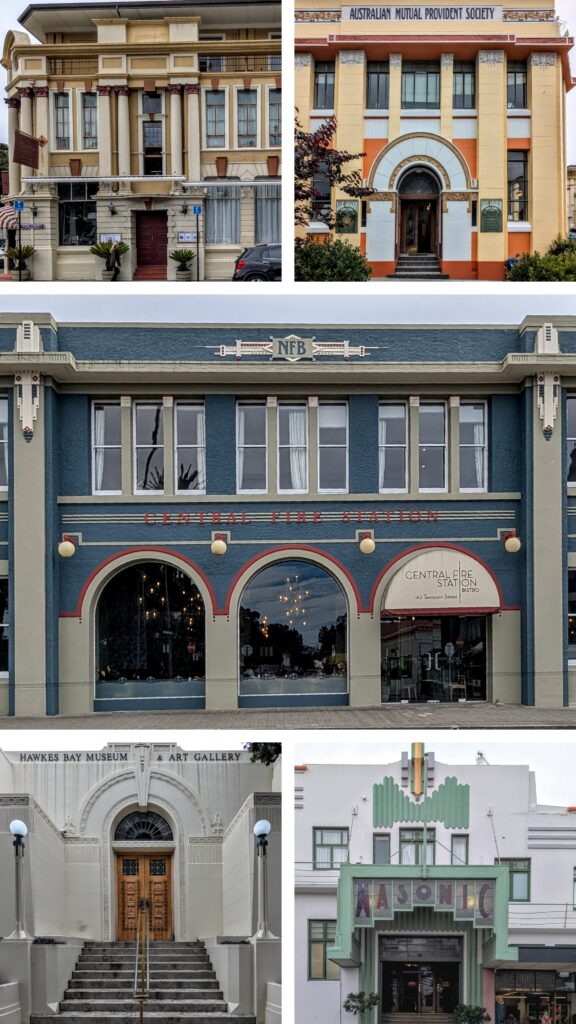
There are so many examples of the Art Deco style it is overwhelming!
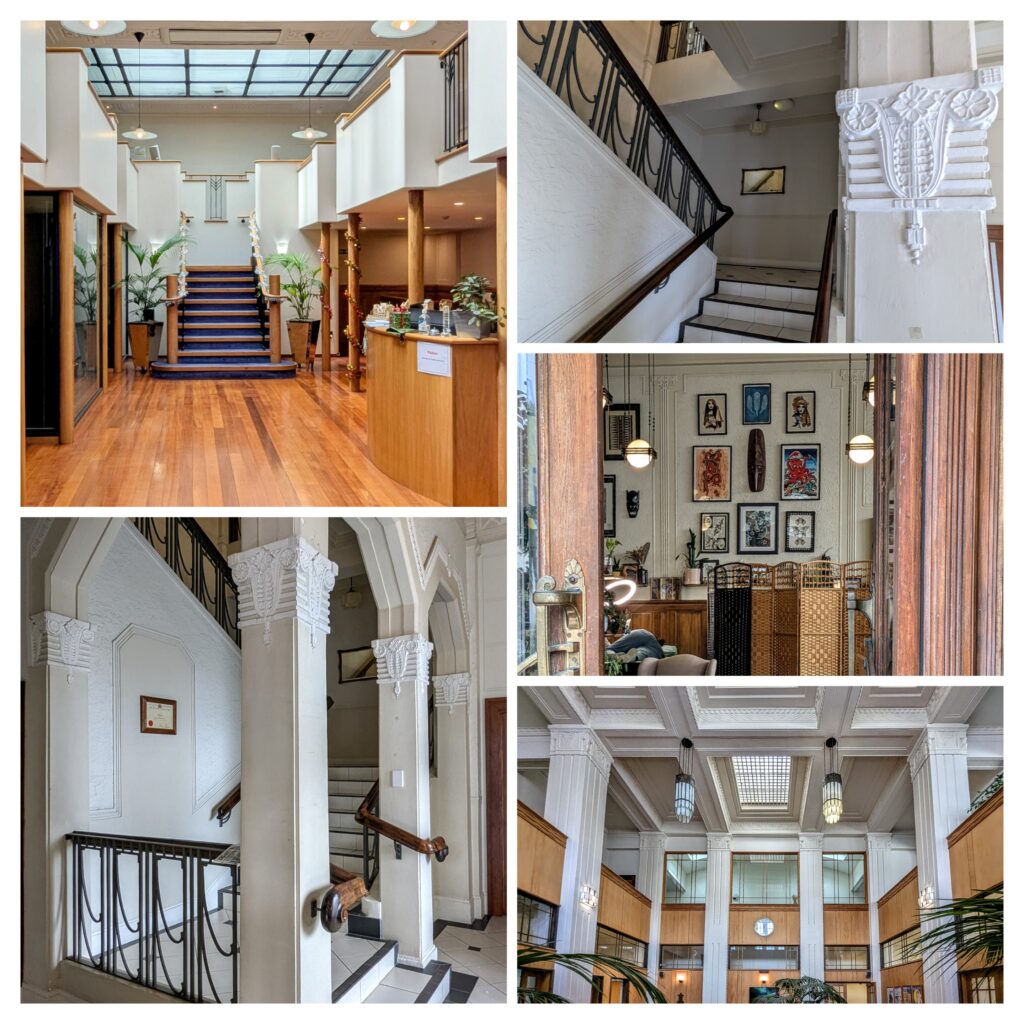
You are allowed to enter the lobbies or vestibules in several of the buildings to see the interior details.
The lines are so clean and the motifs so angular. Napier has so many examples of this style because the February 1931 earthquake and resulting fires destroyed most of the town’s central business district. The town was quick to begin rebuilding soon after so most of the business district was rebuilt between 1932 to 1939! A drive to renovate and restore the iconic architecture was begun in 1983 when several buildings were slated for demolition. The community rallied and the process is ongoing. There are several buildings that still need TLC but Napier has turned the destruction and rebuilding due to a tragic earthquake into a tourist mecca through foresight and dedication to preserving their legacy!
Dec 18, 2025 Napier Style
We spent the day today exploring Napier, first heading to the Botanical Garden, then the CBD with the Self Guided Tour brochure from the Art Deco Centre.
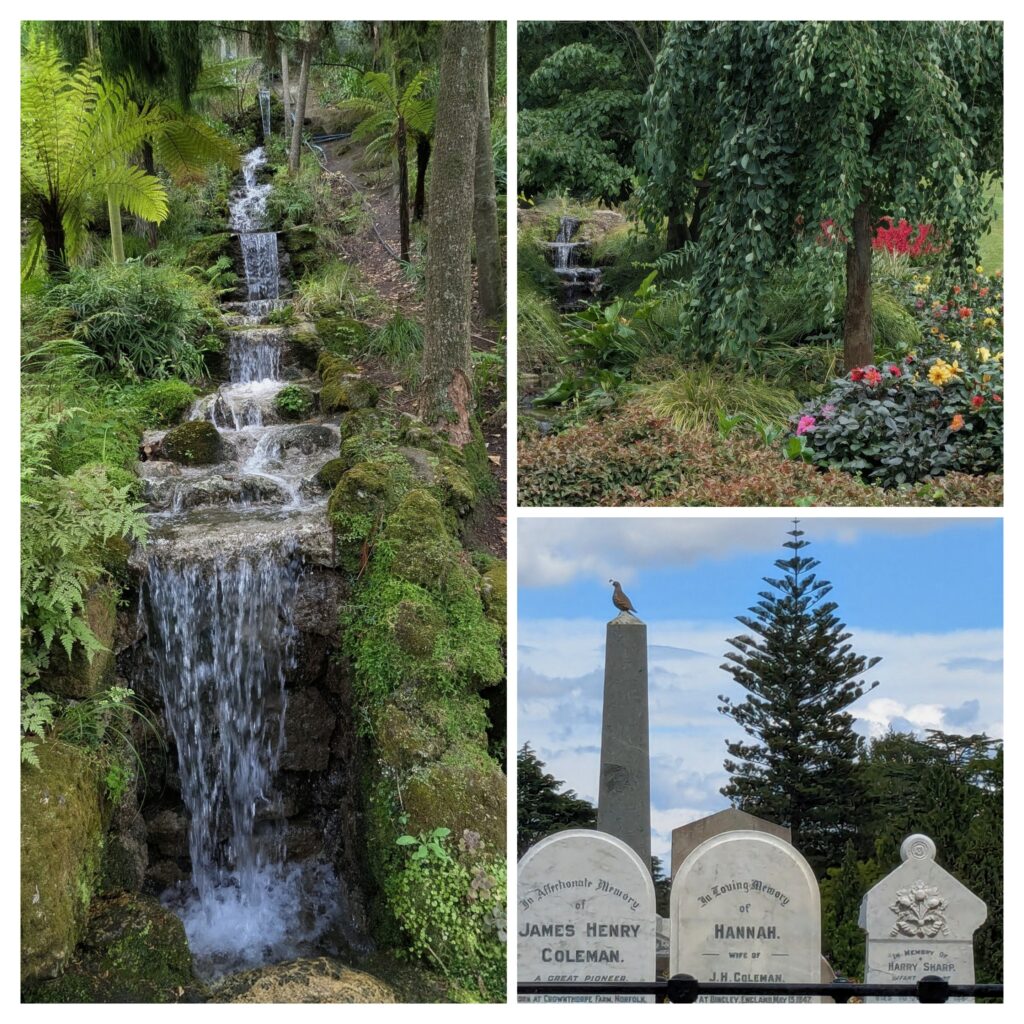
The Botanical Garden is in a natural open bowl with a stage at the center of a grassy slope. The walkways go up and around the hillside planted with trees and flowering bushes. A stream flows down the hillside to a pond at the bottom. The original cemetery for the town is on the hill on one side of the Gardens and is filled with many European pioneers. The quail on top of the obelisk is real and flew off after I got the picture!
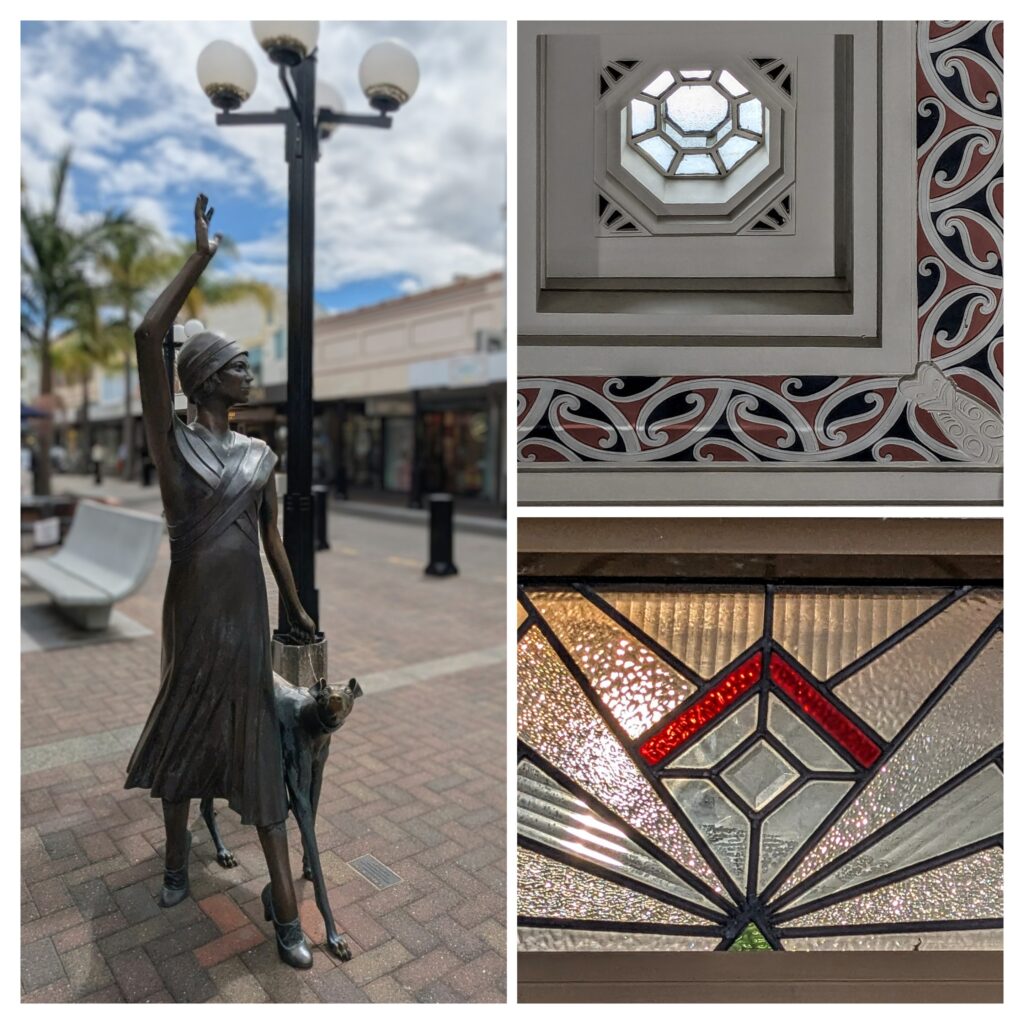
Some Art Deco motifs found around town. Maori design was incorporated in some design like the ceiling of the bank.
Dec 15, 2025 Cape Kidnappers Part 2
Our goal was the Black Reef Gannet colony at the black reef tip of the cape, one of 4 colonies on Cape Kidnappers.

We walked up to the Gannet colony slowly and they pretty much ignored us!

We were able to see pairs of Gannets going through their mating rituals as well as big fluffy chicks being guarded and fed by their parents!
There is a larger colony up on the top of the cape, another half hour hike beyond, that is accessed only by wading through sea water at this tip of the cape which we did not attempt! We sat on rocks watching the small waves lap over the rocks of the shallow reef, the birds flying to and fro, and ate our sandwiches. We watched a younger couple arrive and navigate the trip through the water around the tip which was still thigh deep even at low tide! We started back, now in full sun, and explored some of the narrow canyons opening onto the beach through the high cliffs.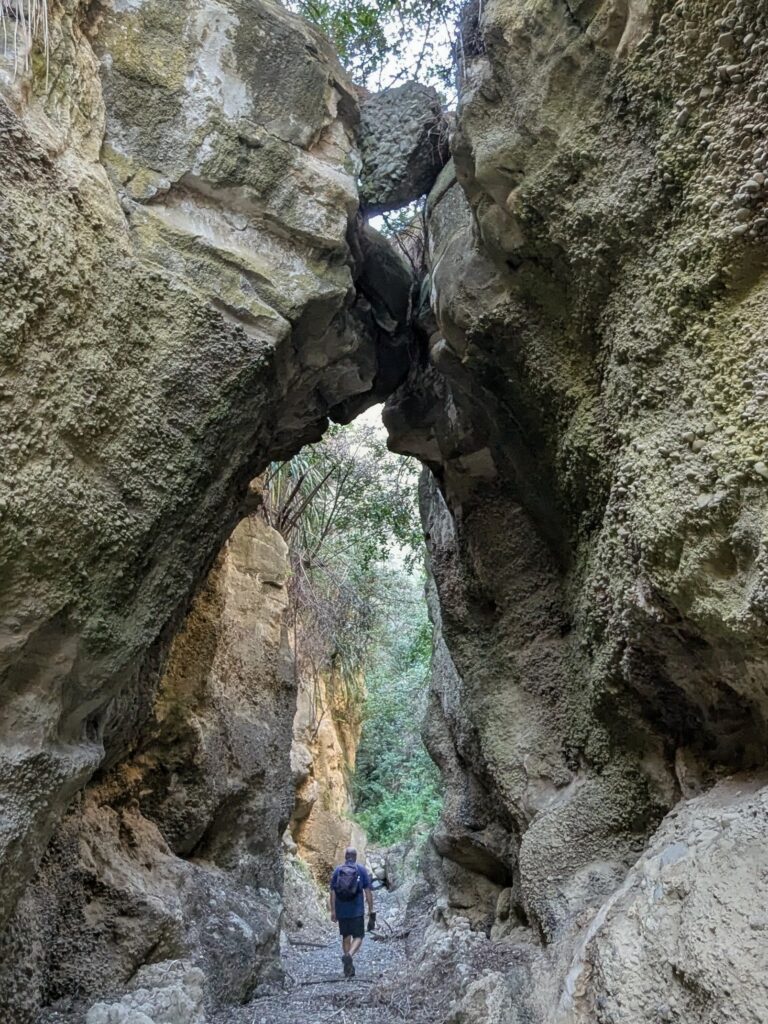
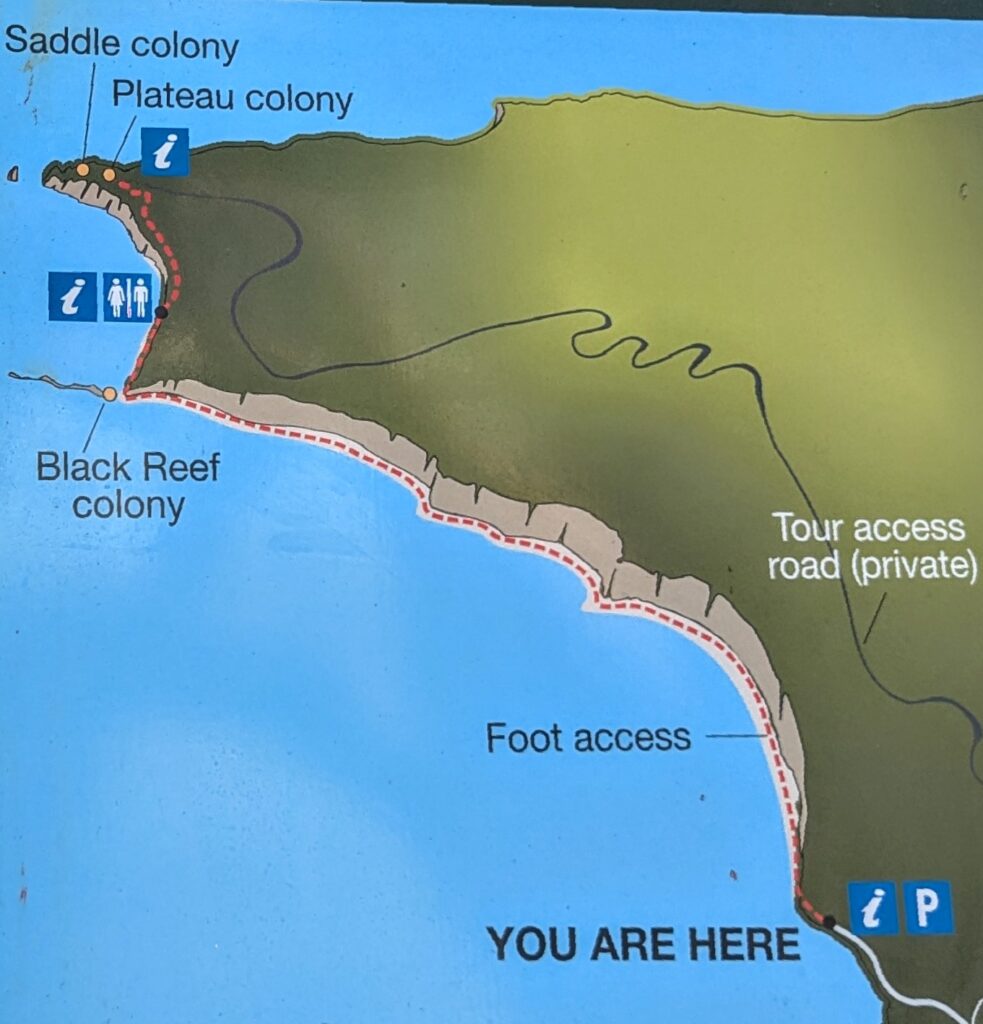
We made it to the Black Reef Colony and back before 11am! We were ready to call it a day!
Researching for this post led me to THIS ARTICLE, apparently this hike is very risky and no longer encouraged due to the risks of rockfall, even landslides, and misjudging the tide!
Dec 15, 2025 Cape Kidnappers Part 1
We got up before sunrise, had breakfast and headed out for a 20 minute drive to the trailhead before dawn. We had to start our hike no sooner than 3 hours after high tide which was at 2:30am. And we had to return from the 5 hour round trip hike before the next high tide at 2:30pm!

We’ve been warned!

The sun rose over the cliffs of the cape, but we were walking towards it, so we kept ahead of the sunrise and walked the 5 miles to the end of the trail in the shade!

The sun highlighted the tip of the cliff with a golden cap over the many layers of sandstone, conglomerate, mudstone, river gravel, pumice and silt, and very prone to erosion!
Dec 13, 2025 Puppies and Alpacas
Today a friend of a friend took us to another friend’s ‘lifestyle block’ to visit with puppies and alpacas! A ‘lifestyle block’ in NZ is what we would call a ‘ranchette’, a small property in the country where you can raise a few animals or some vegetables, move away from the city life and have a country life experience.
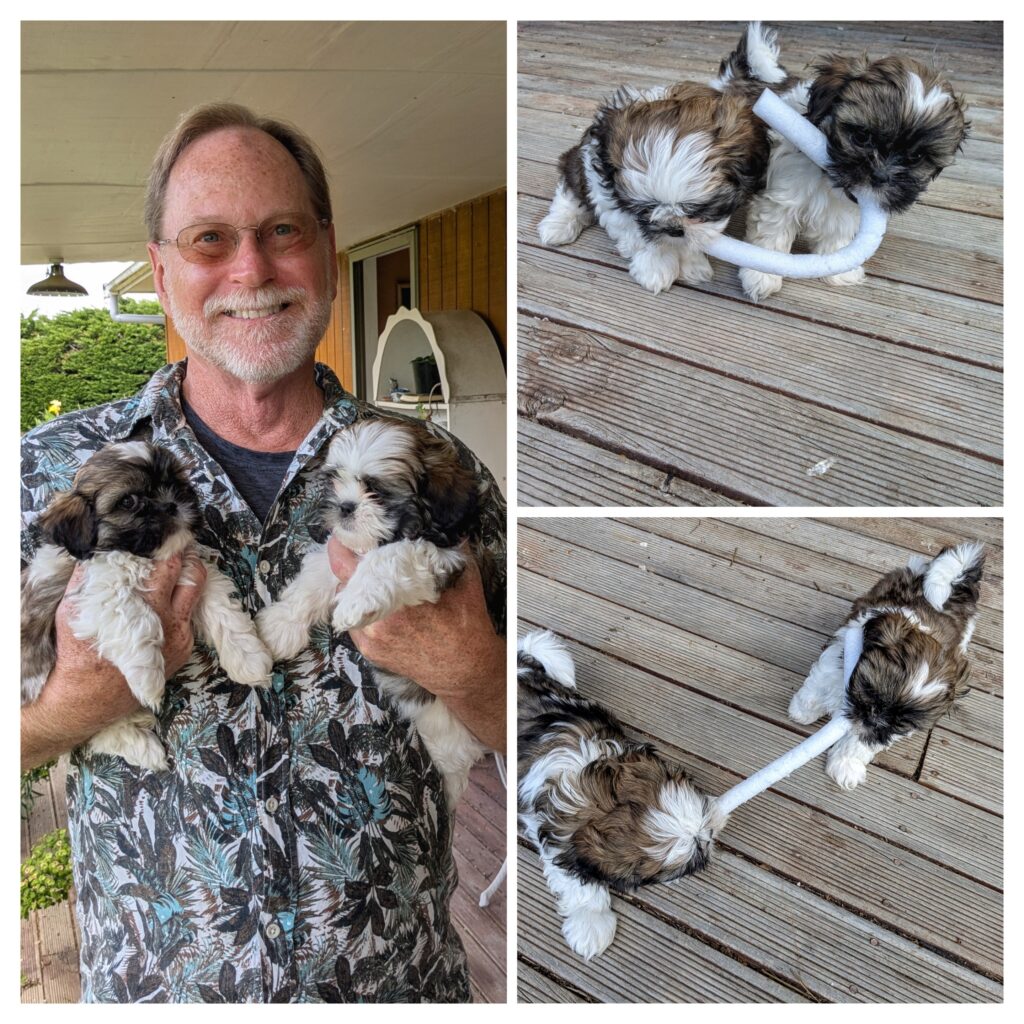
The owner of this property is raising a litter of 4 Shih-Tzu/Pomeranian puppies! The cutest little puppies!
However, the main attraction is the herd of 34 Alpacas out in the paddocks! One breeding male with about 20 females and 4 newborns in one paddock. Another paddock held the 8 yearling males that are removed to protect them from the alpha breeding male! All but one of the Alpacas had recently been shorn for the fibre (not called wool on alpacas) which is sold for processing and knitting similar to sheep’s wool.
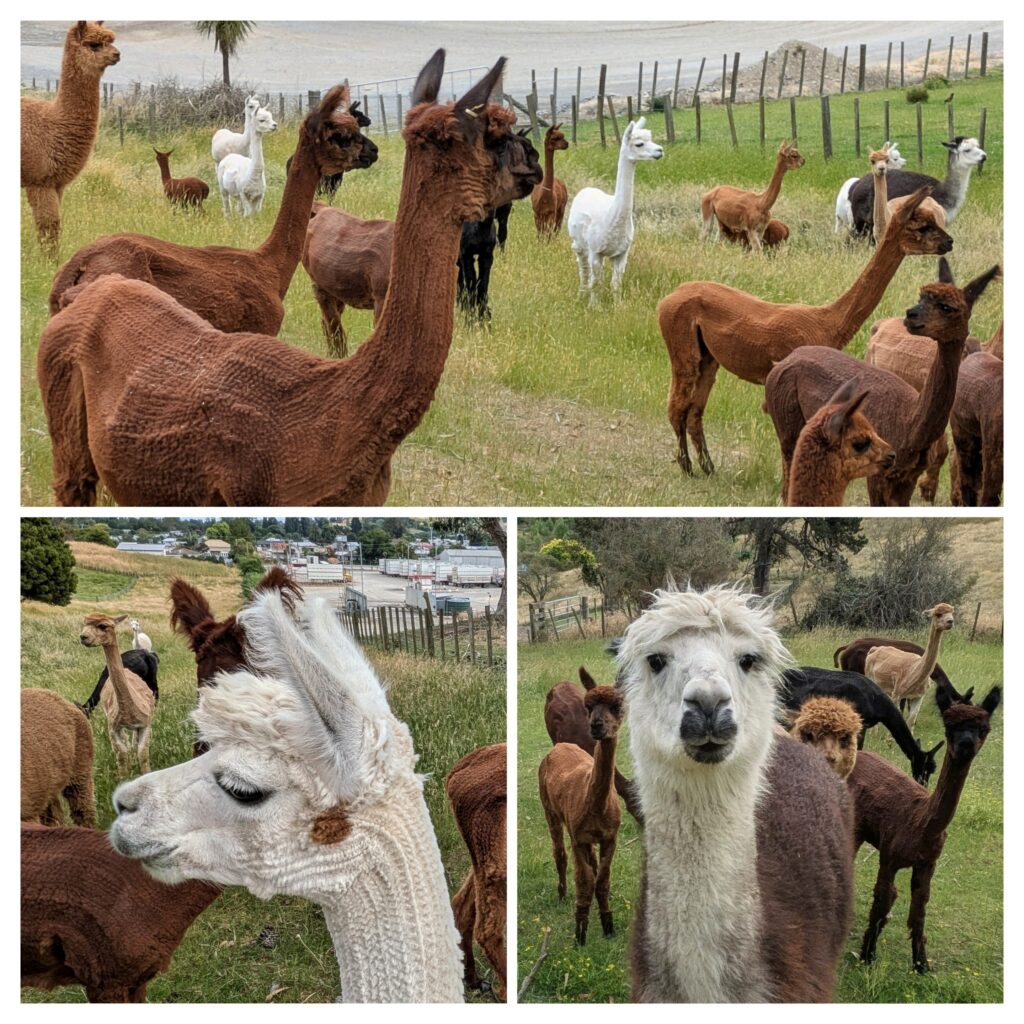
All but one of the herd of females were intently watching one of the Shih-Tzu adult dogs patrolling the perimeter of the paddock! The white alpaca is named Spot and was hand raised, she was least afraid of us and even let us scratch and pet her. Giraffe, the unshorn white and gray Alpaca hid while the rest were herded to the barn for shearing, when she was found she sat down and wouldn’t move, thus avoiding the trauma of a haircut! The other unshorn is the male, at the top left of the top picture. He was just too much to handle so the shearer let him run free!













